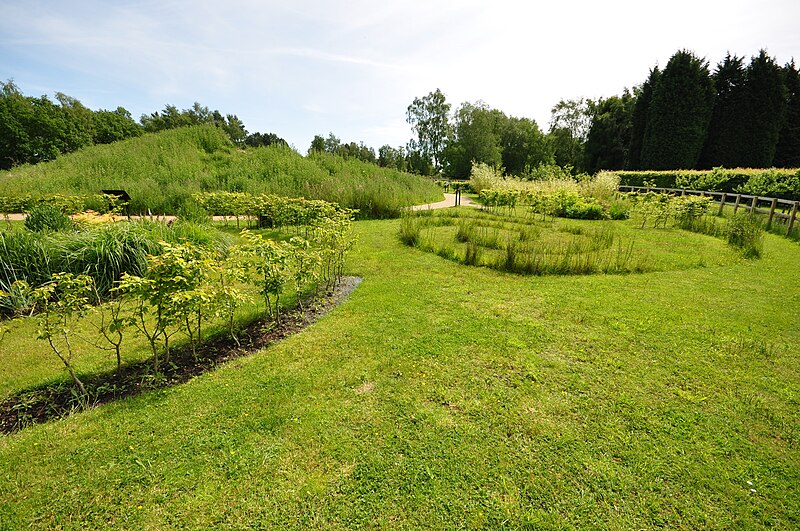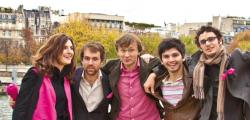
Image by Mike Peel from Wikimedia
Top 10 Sensational Facts about Jodrell Bank Arboretum
At the arboretum at Jodrell Bank, the iconic telescope is a well-known structure.
A beautiful 35-acre arboretum with attractive walking routes complements the interesting learning centre.
A small-scale model of the solar system and spectacular views of the famed Lovell telescope can only be experienced here.
The discovery centre has amazing interactive displays and activities that teach you about the solar system
The arboretum is located in Lower Withington, while the Lovell Telescope and the observatory are in Goostrey, in Cheshire, North West England. The closest cities are Manchester and Liverpool.
Jodrell Bank was first used for academic purposes in 1939 when the University of Manchester’s Department of Botany purchased three fields from the Leighs.
It is named from a nearby rise in the ground, Jodrell Bank, which was named after William Jauderell, whose descendants lived at the mansion that is now Terra Nova School.
The site was extended in 1952 by the purchase of a farm from George Massey on which the Lovell Telescope was built.
Here are the top 10 sensational facts about Jodrell Bank Arboretum.
1. Jodrell Bank is the Earliest Radio Astronomy Observatory in the World

Image by Benjamin Shaw from Wikimedia
Radio astronomy is the study of astronomical objects at radio frequencies.
Jodrell Bank is the Oldest radio astronomy observatory in the world still in existence.
It includes evidence of every stage of the post-1945 ground-breaking development of radio astronomy, which has revolutionised our understanding of the Universe.
It is the only existing site with evidence of every step of radio astronomy’s post-1945 development, and as such, it has played a crucial role in improving our understanding of the cosmos.
Karl Jansky’s discovery of radio transmissions at Bell Telephone Laboratories in the 1930s opened up a new opportunity for astronomers to study the Universe by detecting radio waves released by a variety of objects.
Karl Jansky discovered the cosmic microwave background radiation through radio astronomy.
2. Get up Close to the Lovell Telescope

Image by Mike Peel from Wikimedia
It stands as a symbol of our wish to understand the universe in which we live.
At the heart of Jodrell Bank Arboretum, is the Lovell Telescope which has been quietly probing the depths of space since 1957.
The Lovell Telescope, an internationally renowned landmark in the world of astronomy, is a radio telescope at Jodrell Bank Observatory.
At the time of its construction in 1957, the telescope was the largest steerable dish radio telescope in the world with 76.2 m (250 ft) in diameter.
Even today, it remains one of the biggest and most powerful radio telescopes in the world, helping scientists to probe the depths of space.
The telescope has played a vital role in space tracking and the study of the radio universe.
3. Jodrell Bank Observatory is a UNESCO World Heritage Site

Image by Mike Peel from Wikimedia
The first 20th Century Observatory is listed as a UNESCO World Heritage Site.
The Observatory embodies the value UNESCO places on the universality of science and its ability to build international collaboration.
The UK’s newest UNESCO World Heritage site, Jodrell Bank Discovery Centre is an icon for British science and engineering.
For the last 75 years, the Centre has been at the forefront of ground-breaking discoveries and world-leading research.
The Observatory is home to the world-famous Lovell Telescope and sees 150,000 visitors each year.
4. Let Loose at the Bluedot Festival

Image by Mike Peel from Wikimedia
Bluedot Festival is a British festival of music, art and discovery, held each summer at the Jodrell Bank Discovery Centre in Macclesfield.
Returning after two years, Bluedot will take place against the stunning backdrop of the Lovell Radio Telescope.
On offer will be a weekend of music from across the indie and alternative spectrum.
Beyond the music, Bluedot’s weekend of discovery includes a range of live science experiments, expert talks and immersive artworks.
Festival-goers are encouraged to ask questions and stimulate their minds in the company of some of science’s finest brains.
5. Jodrell Bank was at the forefront of the Space Race

Observations in 1945 at Jodrell Bank image from Wikimedia
A key player in the space race, the observatory has made a unique contribution, including capturing the moment when the Eagle lander, carrying Neil Armstrong and Buzz Aldrin, touched down on the surface of the Moon in 1969.
The first scientific experiment at Jodrell Bank took place 75 years ago; from an army radar trailer, on a damp and icy Friday afternoon on 14 December 1945.
Since then, it has made a unique contribution including capturing the moment when the Eagle lander, carrying Neil Armstrong and Buzz Aldrin, touched down on Moon’s surface in 1969.
A national centre for excellence in public engagement, the Centre prides itself on delivering an important programme of educational services to a wide range of people and communities.
6. Enjoy a Relaxing Stroll in Jodrell Bank’s Arboretum

Image by Timothy Baldwin from Wikimedia
Bernard Lovell, an astronomer who liked trees, founded the arboretum.
The Arboretum, located on the grounds of the Jodrell Bank Discovery Centre, is a lovely family-friendly place ideal for a picnic, a peaceful walk, or even to burn off some energy.
The facility is approximately 35 acres in size, with completely accessible trails connecting the playground and portions of the arboretum.
You’ll discover an apiary and beehives ponds, a bird hide, and even a big meteorite sculpture if you go off the trails to investigate more.
We have National Collections of Sorbus and Malus which bloom in the spring and provide a broad assortment of berries, fruits and vibrant colors in the autumn.
Altogether there are an impressive 3000 trees and shrubs on the site that form the Lovell Tree Collection.
7. Jodrell Bank Observatory is the Hub of all UK Telescopes
Jodrell Bank Observatory is now the hub of the UK’s national 217-km-wide array of up to seven radio telescopes.
The signals from all seven telescopes are combined at Jodrell Bank so that the array operates as if it is a single Telescope.
It has a similar resolving power to the Hubble Space Telescope.
Before leaving Jodrell Bank, experiment with sound waves with whispering dishes, and listen to the sounds of the Big Bang.
8. Visit First Light Pavilion Architectural Masterpiece
The stunning new building will highlight the inspirational heritage of Jodrell Bank.
The striking building, designed by Hassell cleverly mirrors the shape and scale of the landmark Lovell Telescope.
By maintaining an age-old tradition of building structures that express our relationship to the skies above us.
The building makes reference to ancient sites such as Stonehenge and Newgrange, by aligning with the Sun via a meridian line cut through the dome’s entranceway.
Facing due south, a slim vertical window right in the centre of the building invites the sun to shine through a finger of light that moves across the entrance foyer as the day goes on, acting as a giant sundial.
9. There was a Galaxy Garden Designed by Chris Beardshaw

Image by Nilfanion from Wikimedia
Jodrell Bank Discovery Centre went through an exciting period of redevelopment with new visitor facilities opening in April 2011.
Chris Beardshaw, a celebrity TV gardener designed the famous Galaxy Garden.
This was part of the 2012 extensive refurbishments.
It was believed to be the only garden in Europe with a galaxy maze and a planting scheme based on the cycles of the Universe.
From the Big Bang through the creation of the elements, the birth and death of stars, the birth of planets and finally a solar system with planets represented by perennials.
10. The Biggest Reboot after Jodrell Banks Observatory Covid Shut Down.

Image by Mike Peel from Wikimedia
The Jodrell Bank Observatory is back on after the longest shutdown in its history.
The Cheshire site telescopes resumed operations after closing due to the coronavirus pandemic.
The iconic Jodrell Bank Observatory of The University of Manchester took steps to resume operations in what is probably the biggest ‘reboot’ in the history of astrophysics
the first set of telescopes can once again contribute new and exciting data to the international scientific community.
The observatory’s staffing was reduced to a ‘skeleton crew’ on-site after the lockdown.
While the other scientists continued their research by working from home.
The University of Manchester owns and operates Jodrell Bank Observatory.
Enjoy a range of fun-filled activities for all of the family, and discover more about Jodrell Bank’s fascinating history in a telescope talk.
Dive into the solar system and learn all about space in an Orrery demonstration and explore the Jodrell Bank Arboretum.
Go on an adventure to the children’s playground discovering a range of outdoor exhibits along the way.
Planning a trip to Paris ? Get ready !
These are Amazon’s best-selling travel products that you may need for coming to Paris.
Bookstore
- The best travel book : Rick Steves – Paris 2023 – Learn more here
- Fodor’s Paris 2024 – Learn more here
Travel Gear
- Venture Pal Lightweight Backpack – Learn more here
- Samsonite Winfield 2 28″ Luggage – Learn more here
- Swig Savvy’s Stainless Steel Insulated Water Bottle – Learn more here
Check Amazon’s best-seller list for the most popular travel accessories. We sometimes read this list just to find out what new travel products people are buying.










